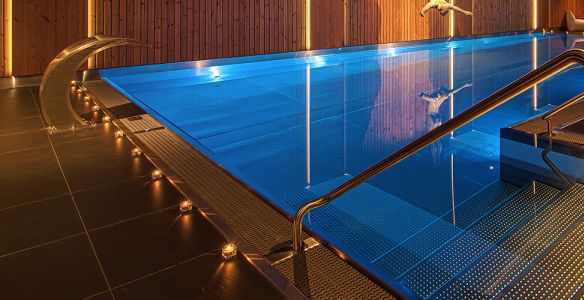Types of Spa and Wellness Facilities - Part 2

Today we will introduce you to the rest of the spa facilities.
Spa Foot treatments
Spa foot treatments are usually located in an area where ceramic or mosaic benches offer a comfortable place to relax while the feet are submerged in cold or hot (but never hot) water. The feet are especially important in the process of warming and cooling, since the small amount of flesh and fats, combined with the large number of blood vessels, allow the cooling and warming effect to be transferred to the whole body by means of heated or cooled blood flow.
Adventure shower
There is a wide variety of showers - cold waterfalls, fog, body jets and dramatic “adventure showers” that offer a multi-sensory experience including aromas, sounds and visuals.
Hydrotherapy bath
Individual hydrotherapy baths deliver a unique feeling of warmth, vitality and hydro massage. The jets can be positioned to stimulate and release the active points in the body. High-quality devices massage the body parts, starting from the feet and reaching the upper body, and they have automatic programs for different and different pressure focusing on the body parts. Aroma oils can be added to make the relaxation more intense and for other senses to participate. Often, body-soothing products are also used. The natural healing power of mineral or seawater can increase their effectiveness.
Vichy shower
The Vichy shower is a horizontal series of showers that form a “rain strip” over a shallow wet bed (similar to a massage table, but with drainage for the water)) that ensures all excess water drains away. This is a therapist-controlled water massage designed to increase blood circulation, moisturize the skin and soothe / relax the muscles.
Dry pool beds
Dry pool beds give a feeling of weightlessness and are used in combination with body wrapping, often including soft hydro massage features. As the device is stable, it is also possible to perform a manual massage on the bed, making it a flexible choice in modern SPAs.
Kneipp Trail
Kneipp therapy was founded in the 19th century by Sebastian Kneipp, a Bavarian parish priest who suffered from tuberculosis and developed this "water cure" to heal himself. Kneipp therapy is not always done in a pool, as hot and cold compresses can actually be used, but it is most often done there. The Kneipp Trail uses a combination of hot and cold water actions to stimulate blood circulation. There are two types of paths - one first steps into the hot water and then moves into the cold.
